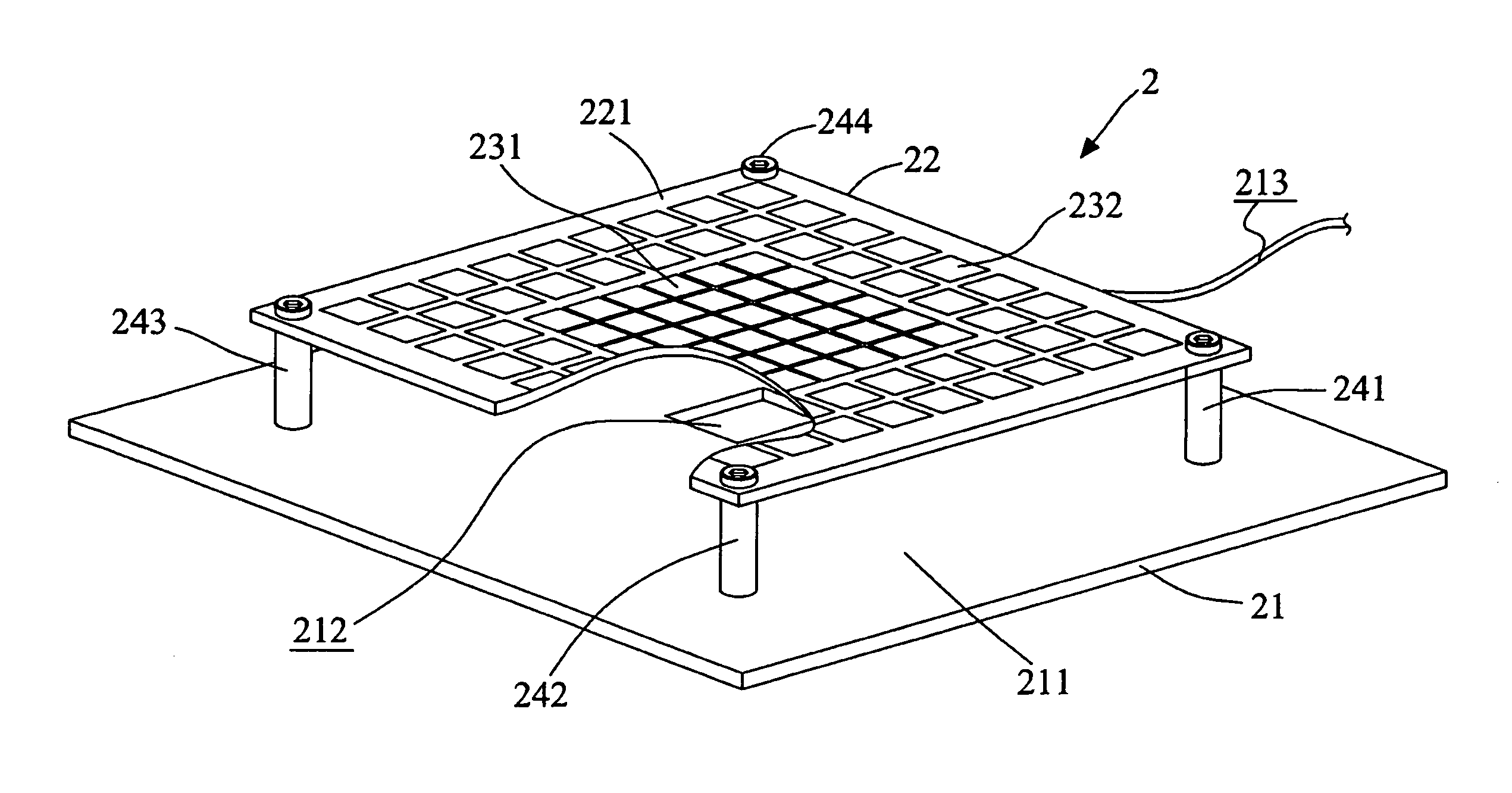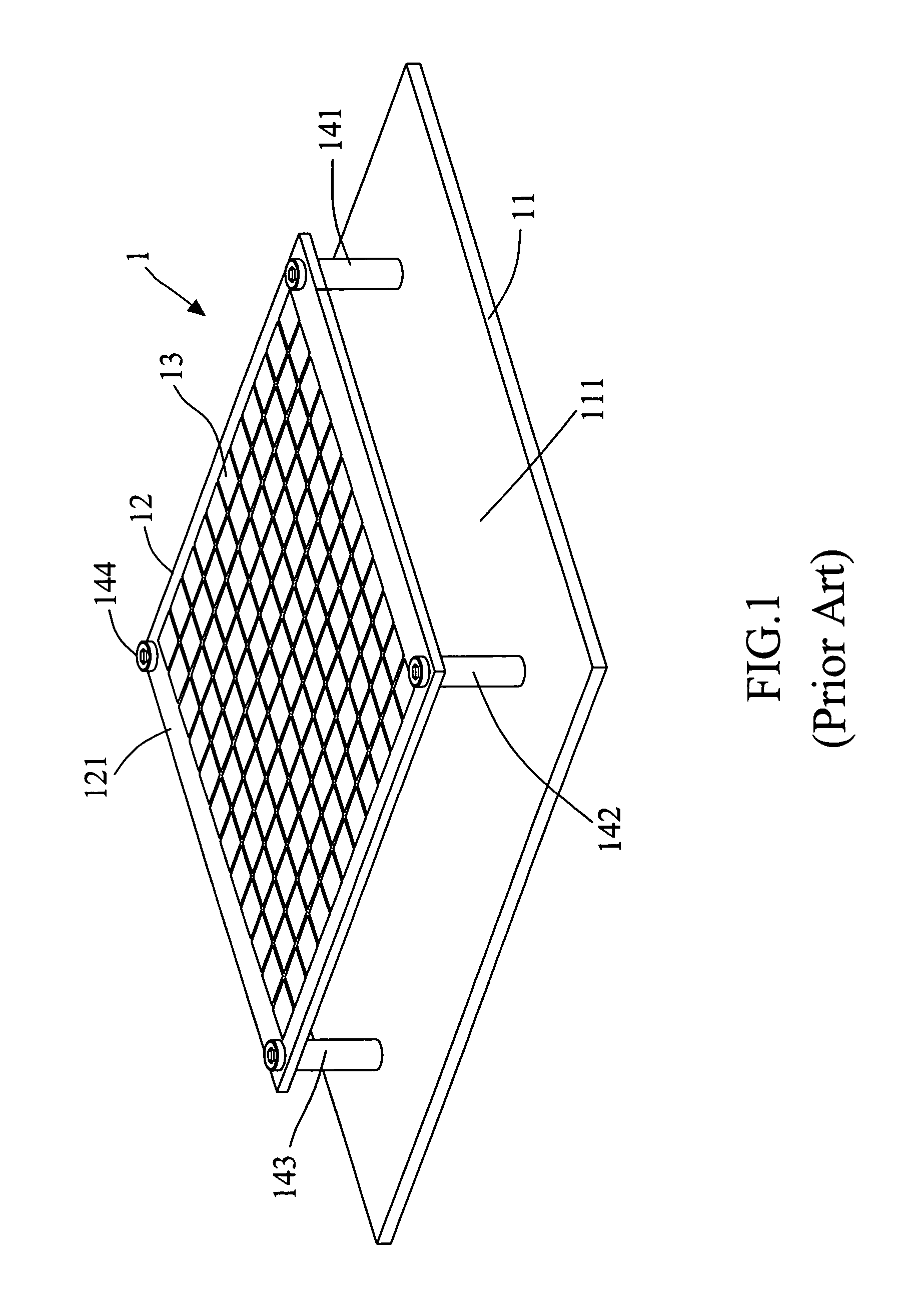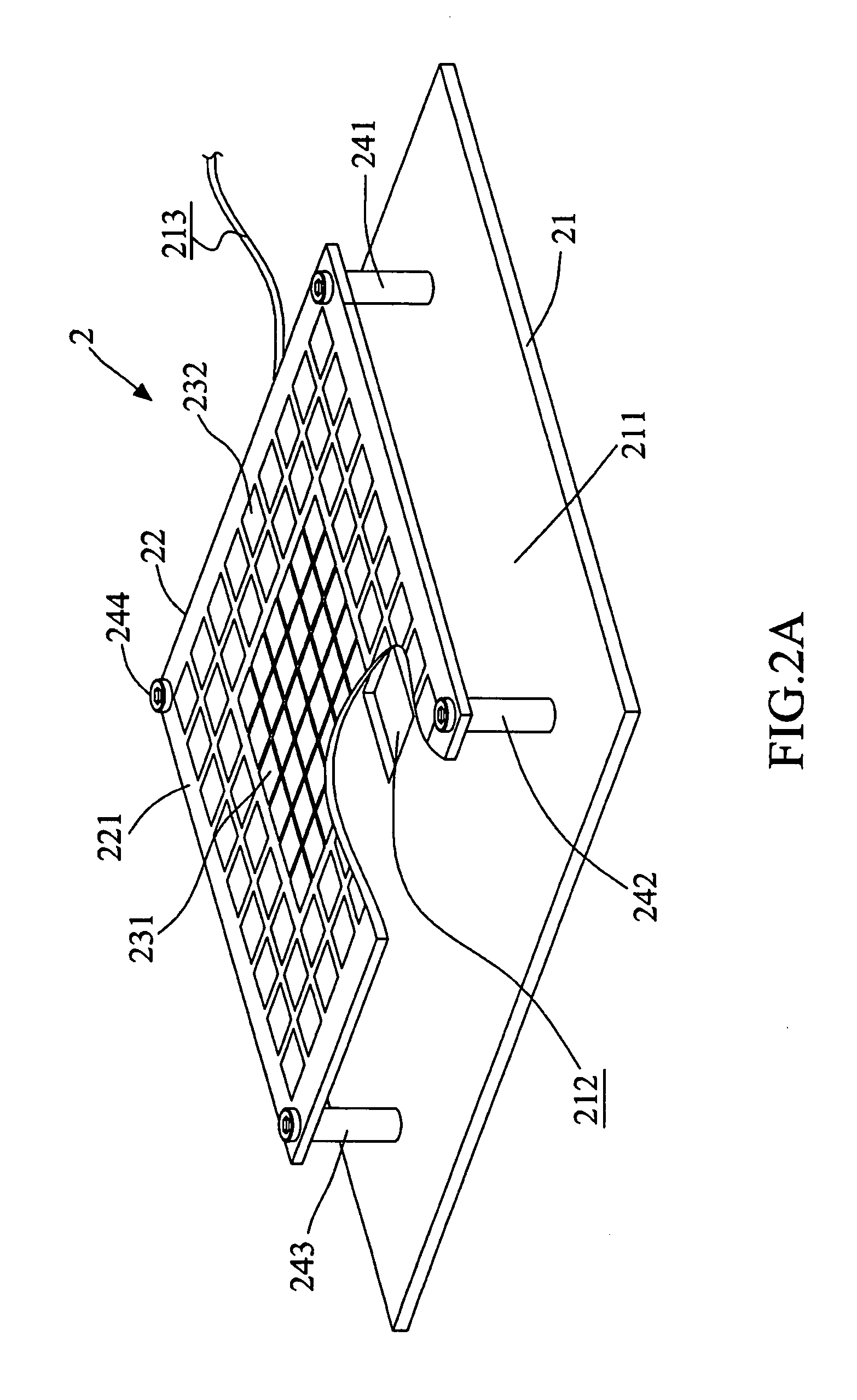Partially reflective surface antenna
a technology of partially reflective surface and antenna, which is applied in the direction of antenna details, electrically short antennas, antennas, etc., can solve the problems of limiting the transmission distance of high frequency signals, the ratio of the side lobe portion to the whole waveform cannot be further decreased, and the gain of the partially reflective surface antenna cannot be continuously increased, so as to reduce the energy ratio of the side lobe portion to the whole waveform, reduce the possibility of high frequency signals suffering interference, and prolong the transmission distance of high frequency
- Summary
- Abstract
- Description
- Claims
- Application Information
AI Technical Summary
Benefits of technology
Problems solved by technology
Method used
Image
Examples
Embodiment Construction
[0030]FIG. 2A is a perspective schematic drawing of the partially reflective surface antenna according to the first preferred embodiment of the present invention, wherein the partially reflective surface antenna 2 comprises a substrate 21 and a reflective board 22. Both of them are composed of microwave substrates made of the FR-4 materials with a thickness of 0.8 mm. The reflective board 22 is supported by a first supporting rod 241, a second supporting rod 242, a third supporting rod 243, and a fourth supporting rod 244. As a result, a resonant distance between the reflective board 22 and an upper surface 211 of the substrate 21 is maintained. The length of the resonant distance is determined with relation to the design frequency of the partially reflective surface antenna 2 of the present invention. That is, when the design frequency of the partially reflective surface antenna 2 of the present invention is 9.3 GHz, the resonant distance is about 1.68 cm; and when the design frequ...
PUM
 Login to View More
Login to View More Abstract
Description
Claims
Application Information
 Login to View More
Login to View More - R&D
- Intellectual Property
- Life Sciences
- Materials
- Tech Scout
- Unparalleled Data Quality
- Higher Quality Content
- 60% Fewer Hallucinations
Browse by: Latest US Patents, China's latest patents, Technical Efficacy Thesaurus, Application Domain, Technology Topic, Popular Technical Reports.
© 2025 PatSnap. All rights reserved.Legal|Privacy policy|Modern Slavery Act Transparency Statement|Sitemap|About US| Contact US: help@patsnap.com



